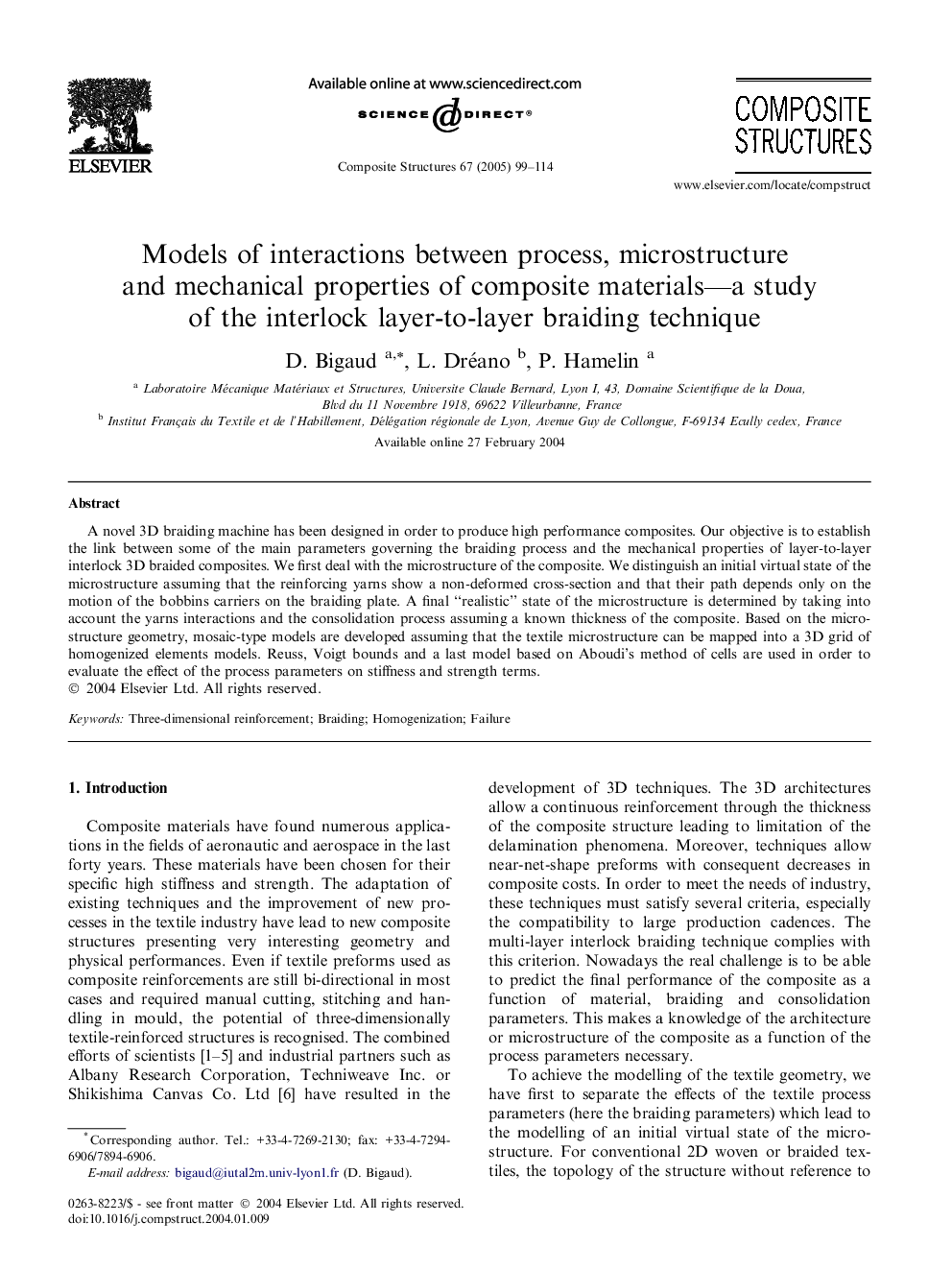| Article ID | Journal | Published Year | Pages | File Type |
|---|---|---|---|---|
| 10284070 | Composite Structures | 2005 | 16 Pages |
Abstract
A novel 3D braiding machine has been designed in order to produce high performance composites. Our objective is to establish the link between some of the main parameters governing the braiding process and the mechanical properties of layer-to-layer interlock 3D braided composites. We first deal with the microstructure of the composite. We distinguish an initial virtual state of the microstructure assuming that the reinforcing yarns show a non-deformed cross-section and that their path depends only on the motion of the bobbins carriers on the braiding plate. A final “realistic” state of the microstructure is determined by taking into account the yarns interactions and the consolidation process assuming a known thickness of the composite. Based on the microstructure geometry, mosaic-type models are developed assuming that the textile microstructure can be mapped into a 3D grid of homogenized elements models. Reuss, Voigt bounds and a last model based on Aboudi's method of cells are used in order to evaluate the effect of the process parameters on stiffness and strength terms.
Related Topics
Physical Sciences and Engineering
Engineering
Civil and Structural Engineering
Authors
D. Bigaud, L. Dréano, P. Hamelin,
